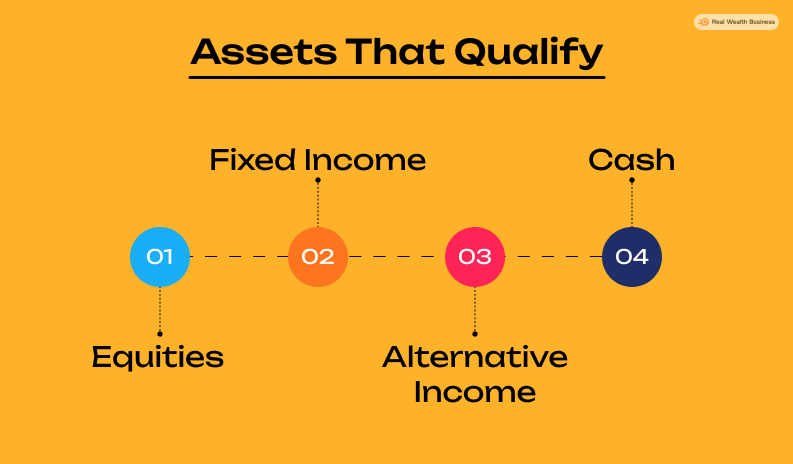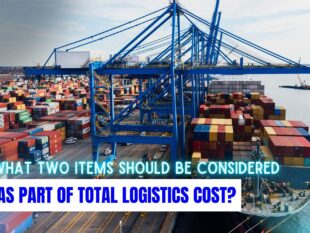Multi Asset Investing: How It Saves Your Future?
by Mashum Mollah Finance Published on: 20 September 2024 Last Updated on: 25 September 2024

Have you ever heard that you should keep only some of your eggs in one basket? Well, that is precisely what multi-asset investing is. It is an investment strategy that ensures higher and more consistent returns.
But is it feasible for you? Or is someone feeding you lies? Well, you can only know the answer to that question if you follow this article. Therefore, keep reading, and you will understand if multi-asset investing is for you.
Let’s go!
What Is Multi-Asset Investing?

Investment is an integral part of growing your money. A person who does not invest will not be able to develop their money. Luckily, there are ample choices for investment, like investing in tangible assets like real estate, AI, and so much more.
Today, we will discuss one such lucrative means of investment called the multi-asset investment. What is it, how does it work, and so much more? Therefore, stick around to get all the juicy details about this form of investing.
As the name suggests, multi-asset investing or portfolios are known to diversify investments to get better and more consistent claims. This was a simplified explanation of what it actually is. For more in-depth knowledge, let us dive right in.
How Does Multi-Asset Investing Work?

As we have already pointed out, multi-asset investment tries to diversify investment. However, there is a specific rhyme to madness. Therefore, do not mistakenly think you can include every other investment under this umbrella term. Or mistake thinking that you know how to invest in AI.
The principle proponent of this form of investment is how different assets perform differently under certain market conditions. While some assets can tank, while others might flourish. Therefore, it maximizes the chance of getting good returns and minimizes risks.
Traditionally speaking, multi-asset investment combines bonds and equities at a 40:60 split. This split is called a balanced split. In fact, pension funds use this method to present daily returns. However, the overall essence of this form of investing has evolved.
Therefore, understanding this evolution and how multi-asset investing works is a significant challenge. Here is how different forms of multi-asset investing work and the points you need to know about.
Here we go!
Strategic Allocation Of Investments
The first variant of multi-asset investing is strategic asset allocation . In this form, assets are analyzed. This is usually done with the help of a fund manager. They sit and analyze the tendencies of these assets.
A fund manager examines how an asset performs or works under certain conditions. This is one of the critical learnings of strategic investment. Once the fund manager has all the data, they start diversifying accordingly.
Strategic allocation is primarily focused on long-term returns. Therefore, strategic investment allocation tries to bring in consistent returns over an extended period.
Tactical Allocation Of Investments
Next in line is the tactical allocation of investment funds. Unlike strategic allocation, tactical allocation is more aggressive. Its job is more focused on maximizing returns.
Tactical allocation is primarily focused on the short to medium-term. A tactical fund manager would assess funds for the highest return rate.
Tactical fund managers sit with the fund corpus and look at the ones with the highest ROIs. Therefore, this process requires deep knowledge and understanding of the landscape.
Otherwise, it will not be possible for the fund manager to understand how a particular investment would function effectively.
Assets That Qualify

Multi-asset investing is a diverse and extensive process of investing. There are several points that one needs to know and assess. Therefore, having a clear understanding of the qualifying asset is an integral part of the whole deal.
In this section, we will list some of the most common investments or assets that qualify for multi-asset investing. However, you need to understand that multi-asset investing is a diverse subject.
With that understanding, let us dive right in and look at some of the most common and recurring investment opportunities for multi-asset investing.
Equities
Equity is another name for a stock. In other words, it refers to the price of a single stock or the amount that will be returned to the shareholder when the share is sold.
Equities are seen as the backbone of investments and capital growth. As a result, most fund managers tend to prioritize equities over other variants of investments. Therefore, be prepared to see equities at the top of the list whenever you let the fund manager manage your funds.
Fixed Income
Fixed income is the second parameter that makes up the portfolio of multi-asset investing. This form of income is one of the most dubious and confusing parameters to understand. Some people might claim that every income is known as fixed income.
In this context, fixed income is actually referred to as ‘bonds’ that are issued by the state or national government. Bonds help businesses to take advantage of crowdfunding. Bonds reduce the risk factor and enhance the chance of getting a higher profit margin.
Alternative Income
Alternative income is the third form of investment you would come across while managing multi-asset investing. Simply put, assets that fall outside the limits of traditional forms of investment are known as alternative income.
Alternative income is an umbrella term and can be flexible. This can be a double-edged sword. It can be easy to manage but difficult to track simultaneously. Given the unique nature of these funds, they provide different returns compared to bonds and equities.
Cash
Last but not least is cash. Cash is a unique form of investment as it comes with a low-risk bracket. Regardless of the market structure and state, cash maintains its supremacy. Therefore, fund managers often tend to include this variant in their multi-asset investment strategies.
Cash is mainly included to give the investment portfolio a cushion on which to bank. In case of a significant capsizing of finances, cash can always become the easy way out. Therefore, it is one of the best investing verticals.
Pros Vs. Cons Of Multi-Asset Investing

Multi-asset investing sounds like an attractive deal. However, gravitating towards it in a blind fashion will only result in losses. Therefore, understanding the pros and cons of this form of investing is an essential part of the whole deal.
Here are some of the most common pros and cons of multi-asset investing that every young and beginner investor needs to know about. Here we go!
Pro
One of the foremost pros of going the multi-asset investing route is the chance of diversification of capital. A diverse investment portfolio ensures that your investments perform under any condition.
Therefore, if one sector of the investment tanks, some sectors can keep on performing and produce consistent returns. This improves overall ROI, which can be greatly helpful in the long run.
Con
Taxation can be very annoying. Sadly,multi-asset investing is not exempt from this one aspect. Therefore, understanding this might dampen the blow but not cease it. Thus, understanding this is very important.
If an investor is investing for a short period of time, they will be subjected to high or standard taxation without any scope of rebate. This is a significant drawback of multi-asset investing.
Pro
We have all been advised to put only some of our eggs in one basket. This is the driving principle of multi-asset investing. Investors mitigate the risk of financial catastrophe by spreading out the investment. This is a common practice that most maximum investment plan(s) include.
This mitigation helps businesses to keep financial collapse at bay. Therefore, even if one asset collapses, others will take care of it. This provides the perfect cushion for failure.
Con
One of the most significant and most glaring drawbacks of multi-asset investing is the need for a guarantee of success. This is a huge problem and can become glaring over time. Yes, there is some guarantee of return. But things can become dicey after a while.
Certain aspects of multi-asset investing ensure returns. However, you must temper your expectations and not exceed them to unrealistic levels. This is one of the biggest challenges. Still, it can be a feasible choice to grow your money.
Hiring A Professional
We have already seen what and how multi-asset investing is feasible. However, you can expect to see heavy returns if you consider hiring a professional. This might not change the nature of your returns, but it can help you iron out the kinks and have a smoother sailing. Therefore, consider hiring a professional for significant returns.
That Is A Wrap

With that, you have reached the end of the multi-asset investing analysis. Yes, multi-asset investing is a great way to organize your investment. It can mitigate risk, enhance the overall ROI, and more.
However, it would help if you did not jump headlong onto the bandwagon, as there are some aspects that can show you that some aspects need to be considered before investing. Therefore, consider these before spending or investing your money.
Keep following our page for more such content.
Additional Reading:



































































































